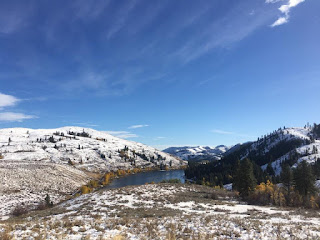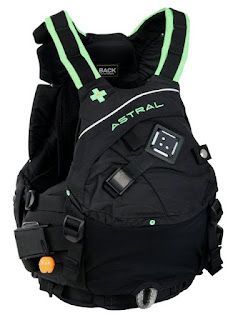Planning Your Own San Juan Island Kayak Adventure
There are a lot of people who search on how to plan their own kayak adventure to the San Juan Islands. This is a great idea if you have a good understanding of a few important topics and you have accomplished kayak skills. If you are new to kayaking or do not have an understanding about the kayak environment here in the San Juan Islands. I recommend going with a guide. This way you have someone with you to ensure safety, navigation and enrich you adventure with information about the islands and wildlife.
The following information is intended for kayakers with a high level of skill and are looking for tips on kayaking in the area of the San Juan Islands in Washington State.
First thing to mention is the water temperature. Many people who live where the water is warm do not face the idea of what happens when you capsize and it takes you a good amount of time to get back in your kayak. With the water temperature here around 48F to 50F year round, well you need to be prepared for getting in the water. Hypothermia is real and can lead to death. It happens much more quickly than most people imagine. Combine a low ambient temperature with the cold water temperature and you have one heck of a time getting warm if you are not prepared for immersion. Learn all skills needed to get back in your kayak quickly in various water conditions.
My suggestions:
*Never wear cotton. *Wool or synthetic base layers are a must
*Wear a dry suit or a combination of dry pants and dry top.
*Have plenty of extra clothing with you in dry bags.
Decide on travel routes. If you plan to stay on San Juan Island and do day tips around the island or if you plan to pack up and camp on an adjacent islands.
Once you have selected you starting point and your travel route for the day, set up a plan. Check the local marine forecast.
USA Weather for the area: http://forecast.weather.gov/MapClick.php?map.x=185&map.y=53&minlon=-124.8&maxlon=-120.57&minlat=46.2&maxlat=49.33&mapwidth=354&site=sew
Canadian Weather for the area: http://www.weatheroffice.gc.ca/marine/forecast_e.html?mapID=03&siteID=06100
Make sure to record the forecast wind speeds, direction and outlook. The weather here changes quickly so it is in your best interest to carry a VHF radio to monitor any changes that may occur. To understand the importance of the wind please see my previous post:
Next is to consult a local tide chart to get the range of tides for the region. Record all the important times of tide changes and fluctuations. Do this for each day you plan to be on the water. In a relationship with tides is current. You can get a copy of the Washburn's Tables and used with the Canadian Tide Atlas, you can get a trend for the currents.
*Note the times for tide change and current direction change are different* Understanding this relationship takes time being on the water in this region. With experience you can start to get a feel for the estimated time for current direction change by looking at the size of the tidal exchange. With big tide exchanges you can see up to 1 and half hours before you see the current direction change. This can be tricky but is a necessity to get a concept of if you plan on kayaking here.
Now you have your weather, tides and currents. Consult your nautical chart and see how it lines up with your travel plans. Does it mean you will be kayaking up strong currents all day? Does it show that if you are crossing a channel you need to have a good angle of approach so you do not get pushed out to sea? These are question you ask yourself to plan a safe trip.
I am not going to take the time here to explain the best ways to kayak against current. If you are not equipped with he knowledge to find back current (back eddys) then you should be going with a guide. If you are not familiar with the concepts of ferry gliding to cross channels, then you should go with a guide.
You have an nice outline now to follow to travel to destinations around the San Juan Islands. Now to make sure you have got all the basic equipment. Below is a list of things that I have every time I get on the water. As a guide I consider myself a safe and prepared kayaker.
Personal Wear:
*Wool Base Layers *Wool Socks *Dry Suit
*Personal Floatation Device with Whistle *Neoprene Spray Deck
*Tow Rope *Neoprene Shoes fully enclosed without laces and nice sole.
*I always carry sunglasses and hats (beanies for cold weather)
*Note* in the pockets of my PFD I carry, fixed blade knife, snack, quick repair parts, compass, sunscreen and lip balm.
In My Kayak:
*First Aid Kit *Flares and Smoke (flares are not good for daytime, use smoke for daytime)
*Compact Stove and Fuel *Snacks *Water
*Spare Clothing in Dry Bags(hats, fleece, jackets, gloves, pants, socks etc)
*Emergency Shelter *Tool Kit *Tapes and Sealants
*VHF Radio *Signaling Mirror *Bilge Pump
*VHF Radio *Signaling Mirror *Bilge Pump
On My Kayak:
*Nautical Chart *Spare Paddle *Deck Compass
The above is what I consider your pe-checklist of things you should do to start your planing. You should consult Washington State Parks on camping locations. Buy a chart of the area and write on it. Use it as a tool! Learn any local laws and regulations to be around marine wildlife. Contact local kayak shops for advice.
San Juan Islands are an amazing place to kayak. But it does come with its dangers. Swift currents cause white water conditons. Learning to read the water and look for features that create back currents and safe places to get out of rips. Understand the relationship between wind and current and how it effects the water conditions. Be prepared to take a spill in the 48F water.
Safe kayaking starts at home when you do a good job on planing your trip. Knowing emergency numbers for the area and how to contact Coast Gaurd if need be. Know emegency take outs and landings. Good Judgement is the next key to have a fun and safe expereience when kayaking. Remember a trip is not really a success if there is a death or near death expereience due to your lack of judgement. Be realistic about your abilities in realtion to the conditons you face.
So please take your time in planing your kayak trip. Make sure you have the skill needed to face the conditions.
I hope that I was able to help give some idea on where to start in planing a kayak trip to the San Juan Islands.
Remember you can always book a tour with a guide. Discovery Sea Kayaks has an outstanding safety record and is known for a high level of training. Who knows if you book a kayak tour with Discovery Sea Kayaks you might just get me as your guide!
Have a GREAT DAY!




Comments
Conil de la Frontera